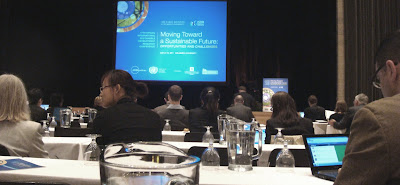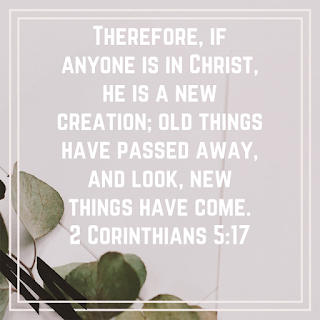ISDRC_two
I meant to get day 2 and 3 out together, days ago, but this has not happened. Here's day 2 for all of the sustainable development lovers out there. Also, here's the conference website itself, with its own outline of important themes.
Day Two.
Lester Brown: “How to prevent environmental and economic collapse”
• Moscow fires and heatwave in 2010 - an example of grain price sensitivity
• Also, dust bowls in Mongolia, Central Africa
• Negative food production factors:
o Climate change
o Falling water tables
• India – 175 million fed by grain produced from overpumping wells
• China – 125 million
• …what happens then?
o Eroding soils
o Farm technology at a standstill; plateau of yields
• Iowa produces more grain than Canada, more soybeans than China
• Indicators of collapse:
o Grain prices
o Social indicators
o Failing states
o All of these increasing in size and intensity
• Plan B
o Stabilize climate
o Stabilize population
o Eradicate poverty
o Revitalize natural support systems
o ++Full cost accounting – gas should not cost $3.00, but $15.00
o Tax jobs less, carbon more (+get market to tell the truth)
o Education
o Reforestation, soil conservation
• Redefine security
o No longer about the military, like last century
o …in term of an intellectual and fiscal sense
o 1942-44 – U.S. didn’t produce cars to make military arms – and surpassed goals
• this restructured the economy
• sustainable development should be called ‘saving civilization,’ as this stirs men’s souls
• the price of water should reflect scarcity
• *I find the concept of full-cost accounting to be a major step developed countries, especially the U.S., can take to understand the value of resources. This can include carbon emission credit prices, the real, unsubsidized price of corn, soybeans, etc., and unsubsidized oil. Though this would necessarily be gradual, hopefully it would restructure our economic system instead of halting a healthier form of development. A presentation I saw awhile ago came to mind where the speaker posed the situation: when we find ourselves with an excess of money/resources, we have two choices in how to utilize it, either to expand or prosper. The example used was a family of three; the husband got a raise in his salary, so the family at that point had the choice to either invest the money in their existing family through education, nicer things, whatever; or have another child while maintaining their current quality of life. This actually doesn’t exactly relate to the topic, but is still a good point. Anyway, if less people drove as a result of higher, truer gas prices, local and regional governments may feel more and more pressure to build high-speed rails, public transportation, etc., which would be a better situation in which to do this rather than when we may potentially feel an energy or material shortage. Why, it could even help prevent such happenings.
Parallel session 2: Stresses on socioeconomic systems
1. Munzazza Fatima – diseases and their unsustainable determinants… urban slums of Bahawalpur
• exogenetic diseases
• qualitative analysis, field analysis
• urban slums:
o poor basic services
o poor housing
o over-crowded
o poor living conditions
o lack of security in land tenure
o general poverty
• environmental unawareness
2. Annie Feighery – Social networks repaired: positive externalities of a depression-based intervention in southwestern Uganda
• Masaka & Rakai
• World Vision intervention:
o Stage 1: trained, paid facilitators
o 2: train-the-trainer with volunteer peer facilitators
o 3: all volunteer
o psychological → social intervention
o bonding and bridging – restoring social capital
• bonding is actually associated with worse health outcomes, these relationships view bridging in a bad way. Bonding is close-knit groups that can become too exclusive, rather than mending bonds across different social networks
• socially mixed is important for bridging in social networks
• results line up with MDGs (Millenium Development Goals)
• proposal to shift focus from development to relief
• more equitable marriage results as well
o *society becomes self-balanced, regulated, accountable
• *This was one of my favorite presentations because the research actually produced real-life results. The situation was that this village in Uganda was heavily affected by the war and violence within the country, leaving many devastated and, as they found out, in a state of depression as I guess the western world defines it. An example she gave of this is that the clinically depressed would not even make the attempt to better their lives – i.e. one who receives a goat simply doesn’t care for it and lets it wander to the street to be killed. This severely limited the scope of aid World Vision could provide
3. Tord Kjellstrom – climate change threat to population health and socio-economic systems
• temperature/heat UP, health risk UP, productivity DOWN
o this affects the local economy when things take longer
o creates greater difference in equity (those working in air-conditioned versus outside, etc.)
• how to develop healthy, sustainable ways to adapt?
• *this presentation provided a segway into how architecture and design could help sustainability, through the right materials and passive cooling strategies to minimize energy use and allow healthy working environments to the marginalized, such as shoe factory workers, who may need to work 10-hour days instead of 8-hour days in the summertime to produce the same amount because their productivity is lowered by the extreme heat condition.
4. Volker Mauerhofer - Social capital, social capacity and social carrying capacity: exploring the social basics of a sustainable development
• capital – an asset capable of creating future benefit for at least one individual
• capability = capacity
5. Gustavo Simas Periera – Brazil nut & rubber exploitations
6. Sergio Molina-Murillo – Indvidual’s attitudes effect in Costa Rica
• Theory of planned behavior – Ajzen
We went to the Highline after day 2.

meanwhile in San Francisco... these are remnants of Sunday's Bay to Breakers celebration. As if San Franciscan dwellers need an excuse to party, this 'race' is a good one. My first-hand confrontation to the thousands of people who walk the route from the East Bay to Golden Gate Park - about 7 miles if completed - came about on my way to church. While biking down our road, still half asleep I suppose, my roommate yells back to me, asking if I see it. I didn't know what at first, then looked up in the distance, and instead of seeing a road there were hoards of colorful and costumed people - at 9 in the morning! This lasted all day long, people in costumes could then be seen all over the city. Happy B2B.

enjoying Bike to Work Day festivities.
But godliness with contentment is great gain.
I Timothy 6.6



Comments
Post a Comment